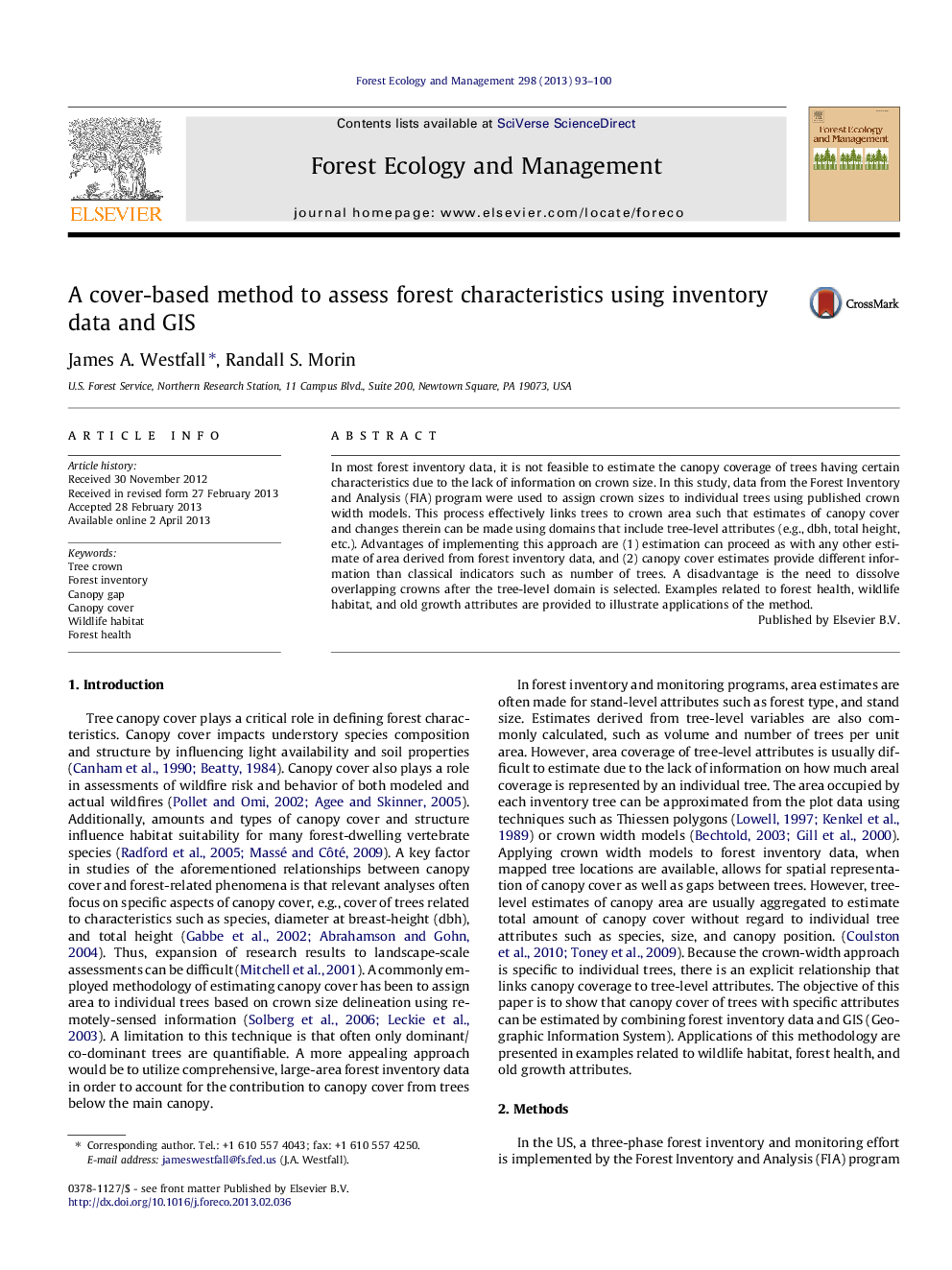| Article ID | Journal | Published Year | Pages | File Type |
|---|---|---|---|---|
| 86841 | Forest Ecology and Management | 2013 | 8 Pages |
•Crown width models were applied to trees in large-area forest inventory data.•Amount of canopy cover was determined by accounting for crown overlap using GIS.•This process links area to individual-tree attributes (e.g., diameter and height).•The area: tree link creates a new analytical model for contemporary forest issues.•Canopy area may provide new information not contained in usual forest descriptors.
In most forest inventory data, it is not feasible to estimate the canopy coverage of trees having certain characteristics due to the lack of information on crown size. In this study, data from the Forest Inventory and Analysis (FIA) program were used to assign crown sizes to individual trees using published crown width models. This process effectively links trees to crown area such that estimates of canopy cover and changes therein can be made using domains that include tree-level attributes (e.g., dbh, total height, etc.). Advantages of implementing this approach are (1) estimation can proceed as with any other estimate of area derived from forest inventory data, and (2) canopy cover estimates provide different information than classical indicators such as number of trees. A disadvantage is the need to dissolve overlapping crowns after the tree-level domain is selected. Examples related to forest health, wildlife habitat, and old growth attributes are provided to illustrate applications of the method.
